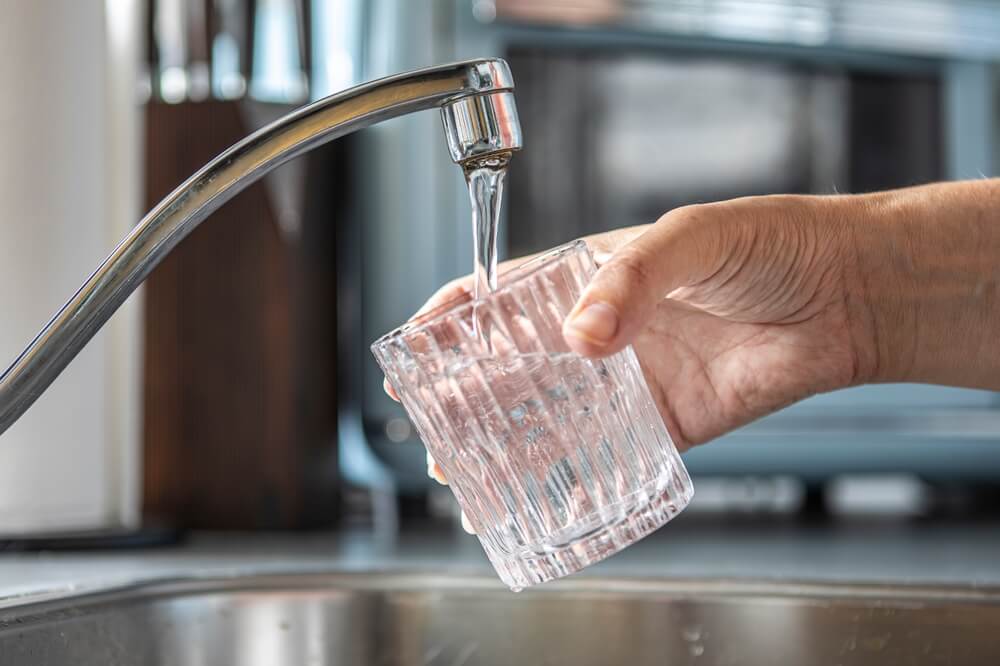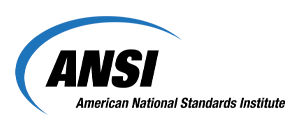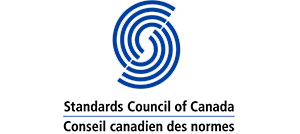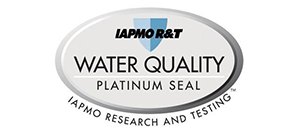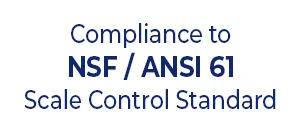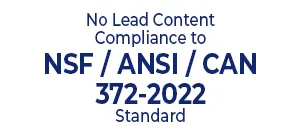Water is essential for our wellbeing, constituting approximately 60% of the adult human body. Yet for millions of households worldwide, turning on the tap delivers disappointment – water that tastes earthy, metallic, bitter, or chemically treated rather than the refreshing, crisp, and clean experience our bodies instinctively crave.
If you find yourself habitually reaching for expensive bottled alternatives or artificially flavored packets just to avoid that unpleasant aftertaste, you’re certainly not alone. According to recent consumer studies, nearly 65% of Americans express dissatisfaction with their tap water’s taste.
The good news?
You don’t need to compromise on taste, health, or sustainability. This comprehensive guide explores scientifically-backed, effective methods to dramatically improve your tap water’s taste profile – helping you reclaim the pure, satisfying hydration experience you deserve while protecting your health and our planet.
Understanding the Science Behind Bad-Tasting Tap Water
Before implementing solutions, it’s crucial to understand the root causes behind unpalatable tap water. The taste profile of your water directly reflects both its chemical composition and physical properties:
Common Taste-Affecting Contaminants
-
Disinfection Agents: Municipal water treatment facilities primarily use chlorine or chloramine to eliminate harmful microorganisms. While effective for safety, these chemicals often impart that distinctive “swimming pool” taste and odor that many find objectionable.
-
Mineral Content Variations: Water naturally contains dissolved minerals – the specific concentration and composition dramatically impact taste:
-
High calcium and magnesium (hard water) create a chalky, sometimes bitter profile
-
Excessive iron produces a distinctive metallic taste and can cause yellow-brown staining
-
Manganese often creates a bitter, medicinal flavor
-
Sulfates can result in a dry, slightly bitter aftertaste
-
-
Infrastructure Issues: The journey from treatment plant to your tap matters enormously:
-
Aging municipal pipes can introduce rust and metal particulates
-
Older home plumbing (especially copper, galvanized steel, or lead-containing fixtures) can leach metallic compounds
-
Degrading pipe linings may release synthetic compounds affecting taste
-
-
Biological Factors: Even with disinfection, certain biological elements can affect taste:
-
Harmless algal byproducts (especially during summer months) create earthy or musty flavors
-
Bacterial action producing hydrogen sulfide gas results in the unmistakable “rotten egg” smell and taste
-
Biofilm buildup in pipes or fixtures can harbor microorganisms that affect taste
-
-
Environmental Contaminants: Modern water systems face unprecedented challenges from:
-
Agricultural runoff containing pesticides and fertilizers
-
Industrial discharge with complex chemical compounds
-
PFAS (“forever chemicals”) increasingly detected in water supplies
-
Pharmaceutical residues that conventional treatment doesn’t fully remove
-
The taste variations you experience aren’t merely aesthetic concerns – they often signal underlying quality issues that deserve attention both for palatability and health protection.
Comprehensive Strategies to Transform Your Water’s Taste
1. Implement Advanced Filtration Technology
The single most effective intervention for dramatically improving water taste is implementing a high-quality filtration system matched to your specific water profile.
Filtration Technologies Compared:
-
Activated Carbon Filtration: Excellent for reducing chlorine, organic compounds, taste and odor. Look for carbon blocks rather than granular carbon for superior performance.
-
Reverse Osmosis (RO): Provides comprehensive filtration that eliminates almost all contaminants, including dissolved minerals. While highly effective, traditional RO systems can produce “flat” tasting water by removing beneficial minerals, though modern systems often include “remineralization” stages.
-
Ion Exchange: Particularly effective for hardness minerals (calcium and magnesium) that create bitter or chalky tastes, as well as heavy metals like lead or copper that create metallic flavors.
-
Ceramic Filtration: Creates exceptionally clear water by reducing sediment and microorganisms, addressing turbidity.
-
UV Purification: Though primarily targeting microorganisms rather than taste directly.
-
Multi-Stage Systems: The gold standard combines multiple technologies to address all taste-affecting elements. Premium systems like TipaTech’s LotusDY represent this approach, with sequential stages targeting different contaminant classes while preserving beneficial mineral content.
Key Features to Prioritize:
-
Micron Rating: Look for sub-micron filtration (ideally 0.5 microns or smaller) to reduce parasites, bacteria and more that conventional filters miss.
-
NSF/ANSI Certifications: Particularly Standards 42,372,61 (aesthetic effects like taste/odor)
-
Filter Lifespan and Capacity: Higher capacity filters maintain peak performance longer, ensuring consistent taste improvement.
-
Gas Removal: Advanced systems incorporate degasification technology that releases trapped air and gases – a frequently overlooked factor in water taste that conventional filters ignore.
-
Mineral Balance: The best systems reduce contaminants while maintaining or enhancing beneficial mineral profiles that contribute to water’s natural sweetness and mouthfeel.
2. Address Your Plumbing Infrastructure
Sometimes the source of taste issues isn’t your municipal water but what happens between the water main and your faucet.
Diagnostic Approach:
-
Comparative Testing: Sample water directly from your water meter connection versus various faucets throughout your home to isolate whether problems originate from municipal supply or internal plumbing.
-
Material Assessment: Document the types of piping in your home:
-
Copper pipes can impart metallic tastes, especially with acidic water
-
PVC or PEX may release trace synthetic compounds in the first years of use
-
Galvanized steel progressively corrodes, introducing iron and zinc tastes
-
Lead components (in pre-1986 homes) pose both taste and serious health concerns
-
Remediation Strategies:
-
Targeted Replacement: Rather than whole-house replumbing, identify and replace problematic sections.
-
Point-of-Entry Filtration: Systems like TipaTech’s T-18 install at your main water line and under the sink, protecting all water entering your home and decreasing contaminant accumulation in pipes.
-
Pipe Cleaning: Professional hydro-jetting or chemical cleaning can reduce accumulated scale, biofilm, and corrosion that harbor taste-affecting compounds.
3. Leverage Temperature Optimization
Temperature significantly impacts taste perception through both chemical and sensory mechanisms.
The Science of Cold Water:
-
Lower temperatures reduce chlorine volatility, minimizing chemical taste
-
Cold suppresses certain bitter taste receptors on the tongue
-
Chilling increases dissolved oxygen content, enhancing perceived freshness
-
Refrigeration can precipitate certain minerals that contribute to off-flavors
Implementation Methods:
-
Dedicated Filtered Water Dispenser: Install a separate, filtered water dispenser that delivers chilled water on demand.
-
Glass Storage: Rather than plastic, which can impart its own flavor compounds, store filtered water in glass containers in the refrigerator.
-
Cooling Without Dilution: Instead of ice (which can introduce new contaminants and dilute water’s natural mineral profile), use pre-chilled glasses or stone cooling cubes.
-
Optimal Serving Temperature: The ideal temperature range for taste perception is 42–55°F (5–13°C) – cold enough to suppress bitter compounds but not so cold that more subtle flavor notes are masked.
4. Incorporate Natural Taste Enhancement
While good filtration should reduce the need to mask bad flavors, natural enhancers can further elevate your water experience.
Flavor Infusion Options:
-
Citrus Elements: Beyond common lemon, consider bergamot, yuzu, or Kaffir lime for complex citrus profiles that enhance water’s natural brightness.
-
Botanical Infusions: Herbs like basil, rosemary, or lemongrass release essential oils that complement water’s mineral notes.
-
Fruit Combinations: Pair complementary fruits like cucumber with strawberry or pear with ginger for sophisticated flavor profiles.
-
Mineral Enhancement: Small amounts of Himalayan pink salt or trace mineral drops can actually improve taste by restoring mineral balance in overly purified water.
Best Practices:
-
Use organic produce to avoid introducing pesticide residues
-
Infuse at room temperature, then chill for optimal flavor extraction
-
Create infused concentrates that can be added in small amounts as needed
-
Experiment with different combinations based on your specific water’s mineral profile
5. Implement Proactive Maintenance Protocols
Even premium filtration systems require consistent maintenance to maintain optimal taste improvement.
Comprehensive Maintenance Schedule:
-
Filter Replacement: Follow manufacturer guidelines meticulously – taste degradation often occurs gradually before becoming obvious.
-
System Sanitization: Periodically sanitize dispenser spouts, connectors, and accessible components to reduce the risk of biofilm development.
-
Seasonal Adjustments: Municipal water treatment often changes seasonally (increased chlorination in summer, different treatment protocols during snowmelt periods), requiring corresponding adjustments to your filtration approach.
The Profound Health Implications of Water Quality
Water taste isn’t merely an aesthetic consideration – it directly impacts your overall wellbeing through multiple pathways.
Hydration Optimization
Research consistently demonstrates that improved water taste dramatically increases consumption volumes. A study published in the Journal of Human Nutrition and Dietetics found that enhancing water palatability increased voluntary intake by up to 90% among study participants.
Proper hydration status affects virtually every physiological system:
-
Cognitive Function: Even mild dehydration (1–2% body water loss) impairs concentration, memory, and mood stability.
-
Metabolic Efficiency: Optimal hydration enhances cellular energy production, supports proper thermoregulation, and facilitates efficient nutrient transport.
-
Detoxification Capacity: Your kidneys require adequate water volume to effectively filter blood and flush out metabolic waste products.
-
Digestive Performance: From saliva production to intestinal transit time, water quality directly impacts digestive system function.
Dermal and Respiratory Exposure Pathways
The water you bathe in deserves equal attention to drinking water. During typical shower exposure:
-
Skin Absorption: Your skin, covering approximately 22 square feet, absorbs compounds directly into the bloodstream, bypassing digestive filtration mechanisms.
-
Vapor Inhalation: Shower steam creates an ideal delivery mechanism for volatile compounds. According to research from the University of Illinois, you can absorb more chlorine through inhalation during a 10-minute shower than by drinking a gallon of the same water.
-
Cumulative Exposure: Daily shower exposure creates consistent, long-term exposure to whatever contaminants exist in your water – potentially more significant than drinking water consumption.
Long-Term Health Protection
Water quality directly impacts long-term health outcomes:
-
Endocrine System Protection: Many waterborne contaminants (particularly PFAS, certain pesticides, and pharmaceutical residues) can disrupt hormonal balance even at extremely low concentrations.
-
Microbiome Support: Chlorine and other antimicrobial agents in tap water can alter gut and skin microbiota composition, potentially affecting immune function and inflammatory response.
-
Reduced Heavy Metal Exposure: Consistent exposure to even low levels of heavy metals through water can lead to bioaccumulation in tissues over decades.
-
Reduced Chemical Body Burden: By minimizing exposure to the complex mixture of trace contaminants in conventional tap water, you reduce your overall toxic load.
Create Your Water Quality Transformation Plan
Improving your water isn’t a one-time event but a progressive journey. Here’s a strategic approach to implementation:
Step 1: Assessment and Diagnosis
-
Obtain your municipal water quality report (Consumer Confidence Report)
-
Conduct independent baseline testing focusing on taste-affecting contaminants
-
Document specific taste characteristics to identify likely culprits
Step 2: System Selection and Implementation
-
Choose filtration technology matched to your specific contaminant profile
-
Consider whole-house protection versus point-of-use solutions
-
Implement appropriate plumbing upgrades where necessary
Step 3: Optimization and Habits
-
Develop consistent maintenance protocols
-
Establish serving methods that enhance taste perception
-
Create hydration routines that leverage your improved water quality
Step 4: Verification and Refinement
-
Conduct follow-up testing to confirm contaminant reduction
-
Gather household feedback on taste improvement
-
Adjust protocols based on seasonal variations and changing water conditions
Conclusion: Transform Your Water, Transform Your Health
The quality of the water flowing through your home profoundly impacts both daily experience and long-term health outcomes. By understanding the science behind water taste and implementing appropriate filtration and enhancement strategies, you can transform ordinary tap water into an exceptional hydration experience.
Advanced systems like TipaTech’s integrated filtration solutions represent the cutting edge of water quality transformation – delivering not just technically purified water but genuinely better-tasting, health-supporting hydration with every sip and shower.
Because water isn’t just something you consume – it’s something you absorb, breathe, and incorporate into every cell. The quality of your water directly determines the quality of your life.
Isn’t it time you experienced water the way nature intended – pure, refreshing, and delicious?
